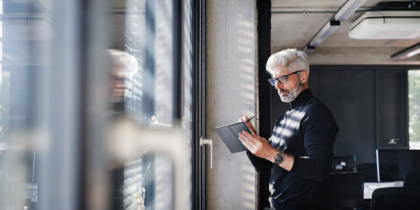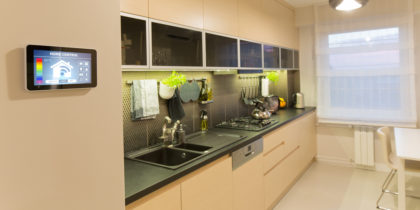In this News Insight, Digital Journal provides guidance on how to plan a successful IoT initiative. For more insights, download episode 2 of our Business Disrupted podcast, covering integrating IoT into the enterprise. —Samsung Insights editorial team
According to Gartner, more than $440 billion will be spent on Internet of Things initiatives by 2020. Yet networking company Cisco recently found that only 26 percent of organizations so far have completed an IoT initiative they consider a success. That percentage isn’t pretty. And companies don’t have much time to climb a steep learning curve and thus avoid costly failures.
So what is preventing companies from getting IoT right? Much of the challenge derives from focusing on implementing technologies without a comprehensive, holistic plan. Sensors? Smart devices? Data analytics? Cloud-based processing? All necessary and helpful. But how will they operate together? How will they collectively transform data into usable information – delivered in time to act in real time? That takes thought. And the thinking must be in the C-suite.
Today’s IoT industry is maturing from stand-alone point applications to integrated systems that capture and process data to derive business insights and even quality of life outcomes. Smart parking solutions, for example, now leverage IoT to analyze parking inventory and guide drivers to available spaces, an outcome with great potential value projected to save hours, miles and even gallons of gas. A more complex IoT “system of systems,” however, might integrate that parking platform with other IoT-enabled systems, exchanging data that leads to actionable insights. An owner/operator of parking structures could then optimize lighting use in different spaces, control climate for peak and off-peak times and temperatures, assess risks and security needs, respond to staffing shortfalls quickly, and even adjust prices for a particular facility based on volume, previous usage patterns, scheduled local events and consumers’ real-time needs.
An optimal pace to value
Companies have been slow to take their IoT solutions to this next level because they face genuine challenges. How to quantify the potential value to justify the investment? How to stay ahead of security risks? How to understand and leverage multiple complex technologies? Or identify physical installation and support services? Or aggregate, synthesize, store, analyze, act on and monetize their data? To many, the feasibility of bringing partners and service providers together to create an end-to-end ecosystem is not yet clear. There is the pressure to anticipate integration points and ensure components and people work together. as well as understand and plan for the potential disruptive impact on the organization, customers and business models.
Nevertheless, developing an integrated IoT constellation of devices, sensors, actuators, gateways and network and cloud service providers, a new breed of IoT platform providers, along with analytics, specialty visualization and integration with enterprise applications – all designed to work together – is the best way to optimize results.
The IoT Value Chain
Components of the IoT value chain should include:
Data capture. Data originates from sensors, actuators, controllers, devices and hardware in the field, but companies quickly learn that implementing a transformational IoT solution involves far more than adding sensors to their packaging, products and the machines that manufacture, deliver and service them. Sensors must collect data spatially (i.e., throughout a space) and temporally (i.e., across time), and be instrumented in such a way that vital signs can be signaled, collected and analyzed for downstream action. Such massive amounts of data must be cloud- and network-agnostic to ensure compatibility with various platforms.
Data communication and storage. To maximize their value, cloud and network services platforms need to deliver operational insights by working with devices at the edge – that is, where the data is gathered. They must be multilingual (able to talk to any sensors using any communications protocol) and hardware agnostic, so that data can be integrated, synthesized and stored, making it available for future context-aware analysis.
Data analysis and insights. Making sense of vast amounts of data and taking action is key to unleashing the power of IoT. Predictive analytics providers identify patterns, network effects or anomalies so undesirable outcomes can be anticipated and prevented. Such analytics prompt prescriptive action: Companies can course-correct on the fly – replacing a part or stopping an engine from overheating, for example – to optimize operational efficiency through improved asset performance and employee productivity. World-class algorithms must be domain-sensitive and industry-aware so they can be meaningfully applied to unique use cases; advanced visualization of data may be required in certain situations.
Infrastructure & security. Beyond cloud and network service providers, IoT solutions at scale need end-to-end security from device to edge to the cloud (and the apps), distributed device management and distributed data management.
Coordination between IoT components and systems of engagement. Systems of engagement may vary from mobile devices to advanced augmented/virtual reality (AR/VR), mixed-reality or other user interfaces. The focus of IoT solutions is now migrating beyond operations optimization to enable new business models (e.g., pay per use), imagine new products and services (e.g., software-based services), monetize data, etc. Indeed, the opportunities are massive as we develop and benefit from “system of systems.”
Partners. The variety and range of technologies for the IoT is enormous, yet still immature. Each participant would do well to understand its role in the IoT ecosystem and get to know adjacent players to partner with to deliver smart, connected IoT solutions at scale. Scale implementations need physical deployment of sensors (and device instrumentation), the operations technology and the digital value chain. And they require a skilled system integrator that also knows the associated IT and heritage systems, to develop and orchestrate the combined ecosystem and, thereby, realize business value.
How to get started
A good systems integrator will start by asking the question, “What business problem do you want to solve?” From there, the company can help to create the business case for an IoT solution by articulating its value, be it cost reduction, revenue enhancement, asset optimization, customer experience transformation or increased safety. Then it’s on to the heart of the engagement: defining new operational processes, recommending IoT-enabling information and operational technologies, identifying and classifying the right ecosystem players in the IoT value chain, and assembling and integrating them based on who plays best where.
This article originally appeared on the Digitally Cognizant Blog
This article was from Digital Journal and was legally licensed through the NewsCred publisher network. Please direct all licensing questions to legal@newscred.com.
For more insights on IoT and the enterprise, tune into episode 2 of our Business Disrupted podcast featuring Erik Qualman, Maribel Lopez and Tamara Dull.
![]()







